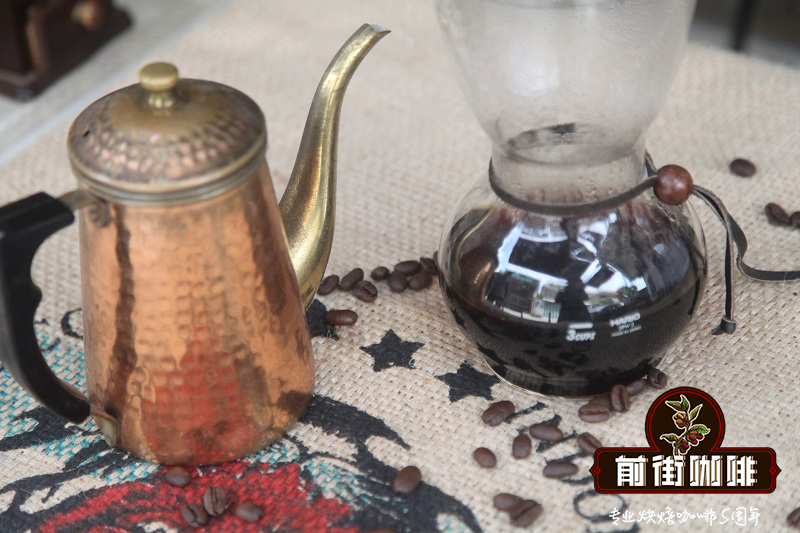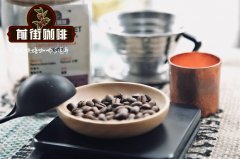Compared with authentic Yemeni coffee brands, what do you recommend? what is the price of Yemeni mocha coffee?

Professional coffee knowledge exchange More coffee bean information Please pay attention to coffee workshop (Weixin Official Accounts cafe_style)
Yemen Mocha Mattari Yemen Mocha Mattari
Yemen Mocha Mattari Yemeni mocha
Country: Yemen
Region Origin: Matari
Altitude: 1,300~ 1,900 m
Varietal Varieties: Typica, Bourbon Iron Pickups, Bourbon
Process treatment: Natural / Sundried exposed to sunlight
Yemen Coffee Bean Production Area
* Yemeni coffee beans cultivation history *
Yemen, known for its frankincense or spice trade, was the origin of the world's first coffee mocha.
If you go back to the past, this is also where Noah built the ark in the Bible.
Legend has it that 3000 years ago, a large mission carrying gold, spices, and a large number of envoys went to Jerusalem to find King Solomon and gave birth to a son of the legendary queen, Sheba's territory. (Rumor has it that this son was Ethiopia's first king)
In any case, perhaps because of ancient history, it is said that the people of this land still have strong self-esteem and extreme independence.
Yemen, which continues a way of life preserved thousands of years ago, is said to have many places that the central government's ruling power cannot reach. Ethiopia, across the sea from Yemen, also exports coffee through the port of Mocha, so Ethiopian sun-cured coffee is often called Mocha (e.g. Ethiopian Harar ETHIOPIA Harra Mokka). Yemeni mocha is the originator of the world coffee trade and has contributed to the promotion of delicious coffee to Yemen all over the world. It is called "Arabic Coffee", which is also the origin of the name of "Arabica Original".
It is said that in the 17th century Europeans imported coffee for the first time and spread it all over the world.
The present "Mocha Harbor" has failed to sustain its prosperity compared to its previous reputation and has become a historical harbor with only white sand beaches left.
Even so, it still goes by the name of Yemeni mocha coffee,"spread all over the world."
Although Ethiopia was the first country in the world to discover coffee, Yemen was the first country in the world to produce coffee on a large scale as a crop. At the beginning of the 17th century, the first batch of Yemeni coffee beans were exported to Europe via the ancient small port of Mocha, which surprised Europeans, because all exported coffee sacks were marked with MOCHA to prove that they were transported from Mocha Port, so Europeans called the delicious coffee shipped from Mocha Port "Mocha Coffee". This is why early mocha became synonymous with Yemeni coffee.
Mokhtar Alkhanshali
Yemeni coffee beans, discovered by an Islamic scholar, began to spread around the world in the 16th century and for the next 150 years, Yemen became the only source of coffee in the world.
However, with the large-scale cultivation of coffee worldwide, Yemeni coffee has not been spared from the so-called "development trend"; now Yemeni coffee has once again reached the top of fine coffee, and it has to mention him-Mokhtar Alkhanshali.
A Yemeni American whose "change" in coffee began with a single cup of hand-brewed coffee. It was from there that he entered the coffee industry, learned professional coffee knowledge, traveled all over Yemen, pioneered the "Mota model" of coffee cultivation and management suitable for Yemen, and constantly demanded the near-perfect flavor standard in mind.
Just when he thought he could finally share this rare flavor with the world, Yemen's civil war broke out, and the whole country was shrouded in war and all traffic was blocked. Sudden war and "accident", in order not to let the flavor burn, Mokhtar twists and turns, finally took the beans to the other side of the ocean in the United States, in the COFFEE REVIEW annual ranking of the top 30 97 points of coffee beans list, ranked first!
Yemeni Coffee Bean Processing
Yemeni coffee beans
Yemen is a classic of sun-baked early flavor, and the only country in the world to produce fully sun-baked coffee. The traditional treatment method of dripping is illegal. It has not changed since the 17th century when Europe was fascinated with game mocha. This is related to the extremely dry climate in Shumen, where coffee is mainly grown in the central highlands, with an average annual rainfall of only 400 - 750 mm, far below the optimal rainfall of 1,500 - 2,000 mm in Arabica.
Yemen coffee beans grow in steep terrain with little rainfall and poor ridge land with insufficient sunshine. Such unique and difficult conditions for coffee growth breed Yemen mocha, which is irreplaceable in the coffee world. The main producing areas of Yemen coffee beans are Sanani, Matari and Ismaili.
Matali production area is located in the western highland of the capital, with an altitude of 2000~2400 meters. It is the highest production area in Yemen, but its location is the most remote and its transportation is inconvenient. Farmers often have to delay for a period of time before they can be transported out after harvesting.
Because water scarcity has prevented farmers from introducing more advanced washing methods, the wild aroma trumps khala coffee, making yemeni coffee beans the best choice for experiencing the ancient taste.
The central highlands of Yemen are rugged and dangerous. Most small farmers adopt the cultivation method of dividing into parts. A few plants are planted on steep slopes and dozens of plants are planted on terraces or steep cliffs. Each has different soil and water and microclimate, so the aromatic composition is also different.
Yemeni farmers sun treatment method is rougher than Ethiopia, directly spread on the roof drying!! This is different from the delicate sun exposure of Yekashefi or Sidamo picking red fruits and laying them on an "elevated net bed", which is the main reason why Yemen coffee beans are particularly heavy.
Yemen coffee beans ancient method of sun treatment method is to artificially harvest fully mature coffee beans directly after the harvest of coffee beans in a special field or their own compacted soil front yard to accept the sun, the sun during the general use of a wooden rake to keep each bean evenly dried, about 20 days after the coffee drying is completed to remove the outer pulp and peel to take out coffee beans,
Yemeni coffee beans are rich in flavor, complex, wild, rich, strong fermentation flavor and low acid quality, plus Yemeni coffee often contains an uncertain factor (when the season rains), it is not an exaggeration to call her the most special coffee in the world.
refined solarization
Mokhtar Alkhanshali also blessed the beans of Mocha Port, Yemen, with a more refined sun treatment, while the beans of Mocha Port, Yemen, also spoke with flavor.
Yemeni Coffee Bean Green Bean Analysis
Mocha is divided into: Shanani Sanani
Important Notice :
前街咖啡 FrontStreet Coffee has moved to new addredd:
FrontStreet Coffee Address: 315,Donghua East Road,GuangZhou
Tel:020 38364473
- Prev

The difference between Burundian Coffee and Rwandan Coffee Burundian Coffee Bean Brand recommendation
Professional coffee knowledge exchange more coffee bean information please follow Coffee Workshop (Wechat official account cafe_style) Burundi-the title of the Heart of Africa, Burundi (Burundi) is a small and primitive beautiful landlocked country, located at the crossroads of Central Africa and East African countries, is the watershed between Africa's great Nile and Congo River, the capital Bujumbura is located by the lake
- Next

Difference between Yemeni mocha coffee, mocha pot coffee and mocha coffee how much is a cup of mocha coffee
More information about coffee beans Please follow Coffee Workshop (Wechat official account cafe_style) Coffee originated in Ethiopia, which is located in the highlands of East Africa, and has been producing high-grade Karabica hand-dried coffee beans, named after Gudu Hara, for nearly 2000 years. More than 1500 years ago, coffee trees were introduced to Yemen on the other side of the Red Sea
Related
- Detailed explanation of Jadeite planting Land in Panamanian Jadeite Manor introduction to the grading system of Jadeite competitive bidding, Red bid, Green bid and Rose Summer
- Story of Coffee planting in Brenka region of Costa Rica Stonehenge Manor anaerobic heavy honey treatment of flavor mouth
- What's on the barrel of Blue Mountain Coffee beans?
- Can American coffee also pull flowers? How to use hot American style to pull out a good-looking pattern?
- Can you make a cold extract with coffee beans? What is the right proportion for cold-extracted coffee formula?
- Indonesian PWN Gold Mandrine Coffee Origin Features Flavor How to Chong? Mandolin coffee is American.
- A brief introduction to the flavor characteristics of Brazilian yellow bourbon coffee beans
- What is the effect of different water quality on the flavor of cold-extracted coffee? What kind of water is best for brewing coffee?
- Why do you think of Rose Summer whenever you mention Panamanian coffee?
- Introduction to the characteristics of authentic blue mountain coffee bean producing areas? What is the CIB Coffee Authority in Jamaica?

